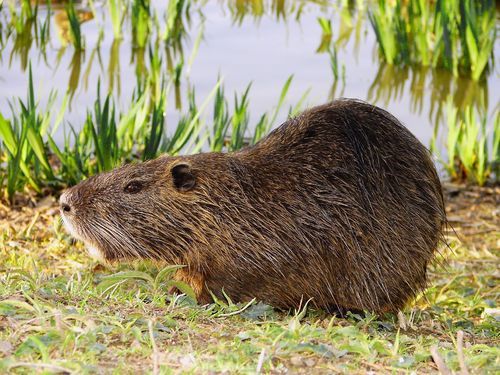
Nutria
The nutria, or coypu, is a large semi-aquatic rodent with distinctive orange teeth and webbed feet, native to South America. Renowned for their destructive burrowing, they play a controversial role in wetland ecosystems, balancing vegetation control with habitat disruption.
4-6 years
Lifespan
6.8 - 9.98 kg
Weight
Length: 43 - 64 cm
Size
3-9 months
Age of Sexual Maturity
7-8 weeks
Age of Weaning
High
Aggression
Least Concern
Conservation Status
Decreasing
Population Trend
Distribution Range of the Nutria
Myocastor coypus, commonly known as the nutria or coypu, is native to South America. Its geographical distribution includes countries such as Brazil, Argentina, Uruguay, and Chile. Nutria are typically found in regions that have abundant freshwater resources.
Nutria's Habitat
Environmental Conditions
Nutria prefer wetland environments, including marshes, swamps, and riverbanks. They inhabit areas with ample water sources, such as lakes, rivers, and ponds. The climate in their native region is generally temperate to subtropical, providing suitable conditions for their survival.
Ecological Niche
Nutria play a significant role in their ecosystem by aiding in vegetation control. They feed primarily on aquatic plants but can also consume crops and other vegetation, impacting agricultural areas. They are known to construct burrows in riverbanks, which can influence soil erosion and waterway navigation.
Copyright @ Nature Style Limited. All Rights Reserved.
 English
English